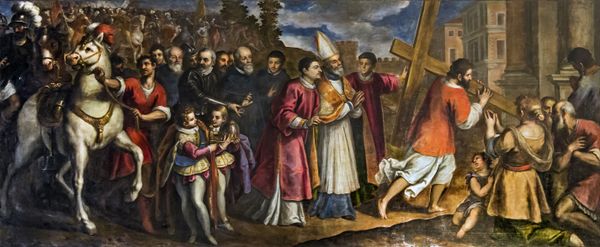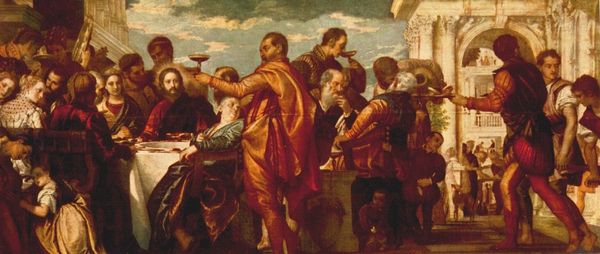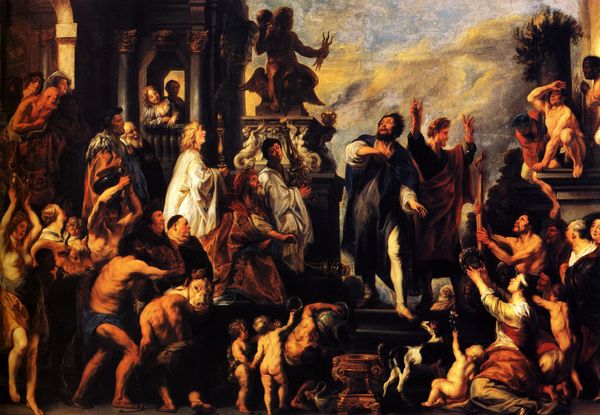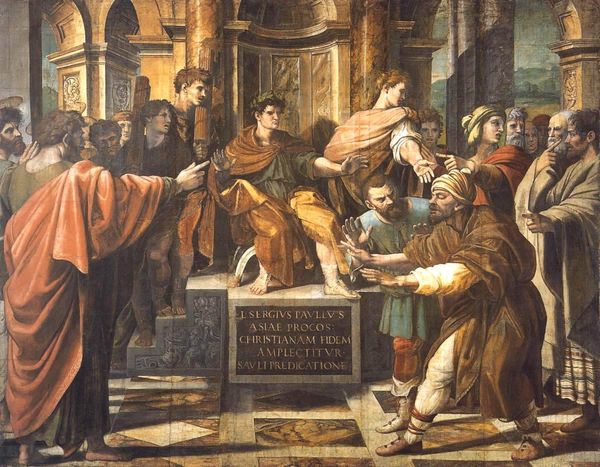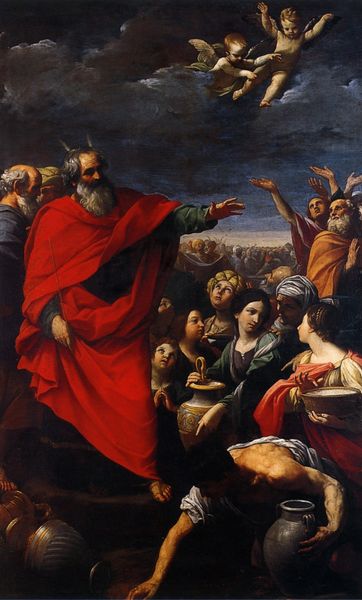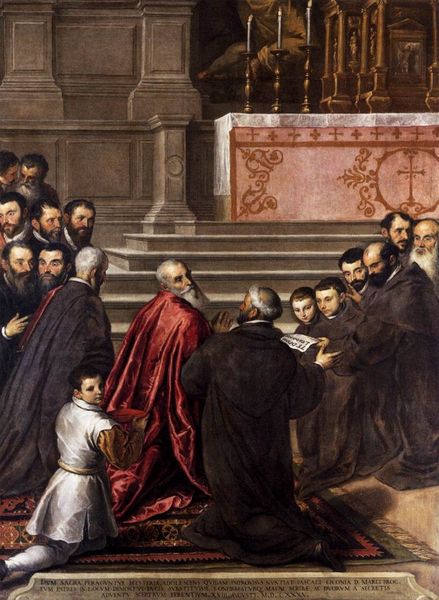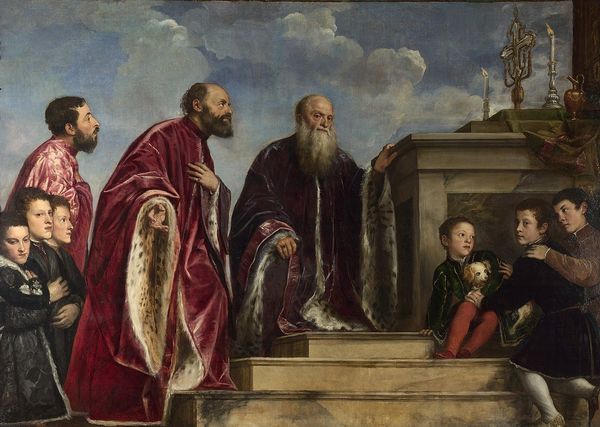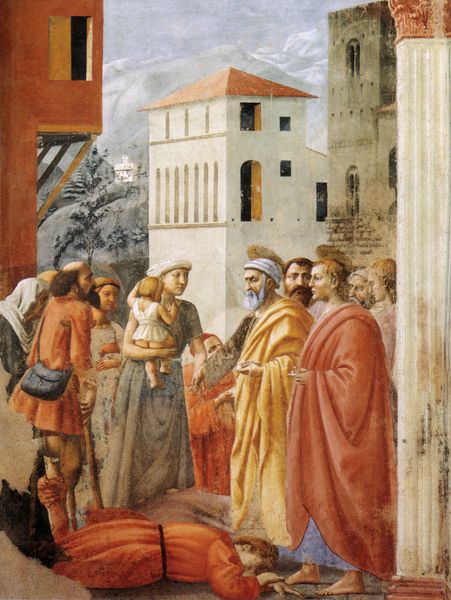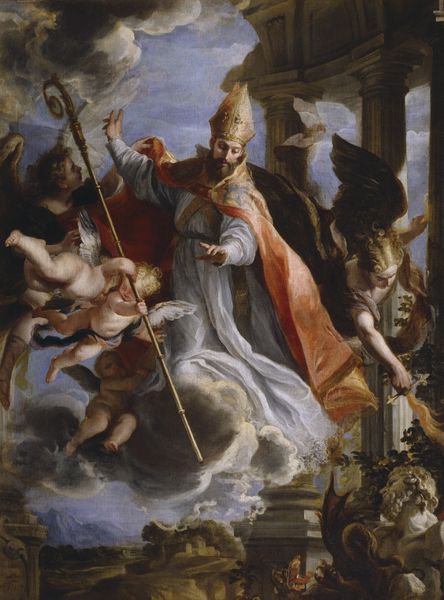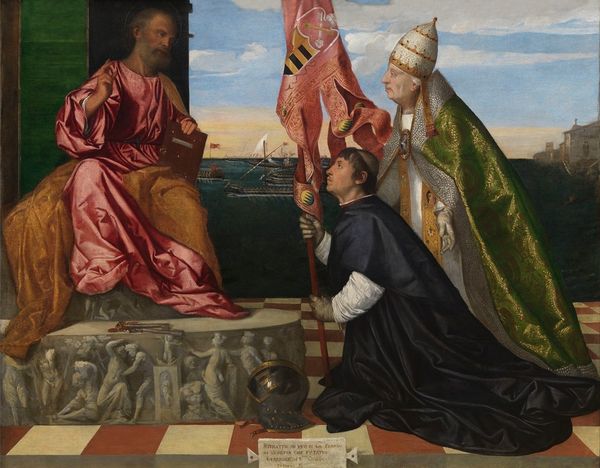
Pope San Cleto Founds the Order of the Crucifer - St. Cyril's Bishop of Jerusalem Reaffirms the Order 1593
0:00
0:00
palmailgiovane
I Gesuiti (Church of Santa Maria Assunta), Venice, Italy
#
character art
#
painted
#
possibly oil pastel
#
derelict
#
underpainting
#
mythology
#
painting painterly
#
watercolour bleed
#
mixed media
#
watercolor
#
unfinished
Copyright: Public domain
Curator: Here we have "Pope San Cleto Founds the Order of the Crucifer - St. Cyril's Bishop of Jerusalem Reaffirms the Order," created by Palma il Giovane around 1593. Editor: My immediate reaction is to the theatrical quality of this image. The figures are positioned like actors on a stage, bathed in light. It is very performative. Curator: Indeed. The composition follows a hierarchical arrangement, quite typical for art serving the Counter-Reformation’s didactic ambitions. Note how Pope Cletus is visually elevated, signifying his authority, and also take into account the background of this piece being inside a church in Venice. Editor: The columns and architecture in the backdrop frame the figures but also draw the eye upward, and, it almost appears that those in attendance are clamoring around a set of official decrees, in some important chamber or hall. One gets the sense that even in painting, power and authority are embedded and expressed through spatial organization. The gaze gets manipulated with this technique. Curator: Exactly, the artist guides our interpretation. However, I think that we can notice the artist, il Giovane’s use of color too. The robes, while not vivid, create visual anchors within the piece. The various whites and reds especially pull out from the canvas because the tonality has a somber feel to it. Editor: Agreed. But the somewhat muted palette also softens what could have been a more overtly bombastic scene. I mean, look at the man kneeling with his back turned and partially illuminated by an implied external source, as if the subject and light source came from somewhere beyond the frame, it's genius! It also provides a nice counterweight against the architectural backdrop. I feel its symbolic presence alluding to external sanction or validation is also important. Curator: Certainly, the distribution of light and shadow enhances that idea and creates dramatic effects, like you noted initially. We get sucked into this grand stage with a purpose, beyond the frame. Editor: Yes, and while it's staged and symbolic, it offers an insightful glance into the construction of power in a particular historical moment. What could have simply depicted faith ends up being about civic and societal rule in conjunction with Christian virtues. Curator: Precisely. In terms of art historical importance, the piece demonstrates the effective use of design during a complex intersection of art, history and societal movements.
Comments
No comments
Be the first to comment and join the conversation on the ultimate creative platform.

